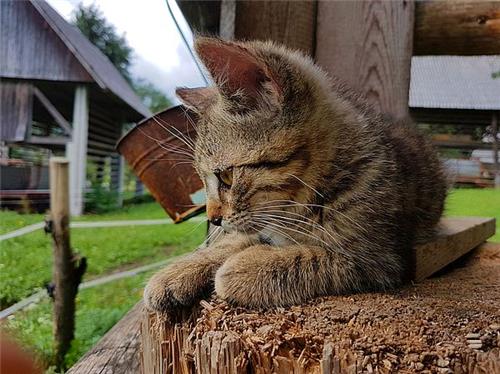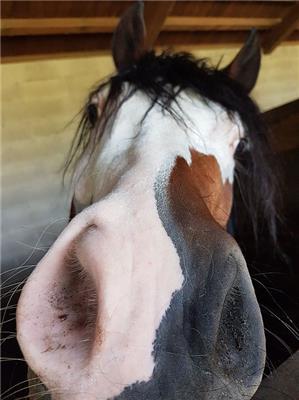Guidelines - Working with Animals
How to make the most of any work with Animals
I consider Animals as my friends and teachers. To me (and to many who are regularly communicating with them) they are as evolved beings as we Humans, with different abilities, perspectives, purposes and of course different - and sometimes more limited - bodies. They can be extremely wise with often remarkable insight on Life and situations.
If you want to get the most of your communication with animal companions, whether it is your beloved dog or a found stray cat, you must truly consider them as evolved beings. In my opinion, they are equal to humans and deserve the same consideration. Maybe this is shocking to some of you, and I won't try to convince you. But then you might not find what you're looking for here, and may want to stop reading here. However, if you're ready to open to a new perspective, then you're most welcome to stay!
How you perceive and consider the Animal Kingdom will affect your work with them. Their trust in you and in your ability to understand what they have to say will depend on how much credit you give them. Think for a minute: would you really enjoy talking to someone who considers you a bit dumb, limited or feels superior to you?

7 Keys Principles when working with Animals
1. Ask for permission
Ask for permission before performing any kind of healing or work on an animal. Ask for permission both from the animal - and their person, if it is someone's companion. Following with what I mention above, it is a mark of respect to ask them for their permission first. We want to be welcome, not considered as rude intruders! It will give you credit in their eyes too, and they will be more willing to collaborate, share information or receive your healing.
This first step will also give you a lot of useful information, especially on the animal personality, mood of the day, etc.
You could skip it if it is your own animal friend and has been previously commonly agreed. I personally prefer to always ask them beforehand, tell them what I’m going to do and make sure this is ok for them. I find them more receptive and my work more efficient.
2. Free Will
Communicating with Animals doesn't mean you can have them do or act the way you want. They have free will. They have their own path and agenda, understanding and purpose. We must respect who they are, as individual and as species. We cannot force them to act against their nature.
Free Will also mean that the animal might not take the healing or help offered. We must be very respectful and humble and accept when the animal says no, or turns us down. Believe me, it's not easy to at all! Especially when the bond with that animal companion is really strong and you want to do and try absolutely EVERYTHING to help or save him/her...and they don't.
But don't worry! They are more often than not happy to be heard, to talk and receive healing :-)
3. Clean your own vibrations first
Become the neutral observer. This is a very important step, especially when you want to help one of your own animal companions. Because of the emotional load and of how the issue at hand affect you, it is crucial to clean your own energy field first. Your work will be more effective. Your connection with the animal will be clearer and more objective.
Become aware of your own part in the said issue. It might be somehow mirroring a situation you're living for instance. It might resonate with or reinforce your own limiting beliefs on a topic, like "Cats always scratch furniture. Everybody knows this"
Be aware of how you react to the issue. If your dog never stops barking, it might upset you, make you feel powerless, ashamed, angry, etc. Be very honest with yourself.
There are different ways to clean vibrations and get into a neutral state, the most common ones are maybe meditation and EFT (emotional freedom technique). Video/audio to follow soon.
4. Be patient
There may be many layers to one single issue. Depending on how long it's been going on, the history, the background or your pet or animal friend, more than one session might be needed to clean what's blocking them or causing their discomfort. Just as when we humans do personal healing work on ourselves, once you clean one layer, another one appear. The first issue is like a veil hiding or covering a deeper one. There can be several layers, like when you're peeling an onion. So don't get discourage if things take time sometimes to improve or clear out completely. Often you will notice some changes, even minor, indicating that things are going in the right direction. Don't give up. Keep on with the good work.
5. Keep an open mind
Be ready to be surprised! Don't be too strict on how your animal is going to communicate with you, what is going to come through or what they have to say. Don't ignore or turn down information you get, even when it seems weird or not making sense. Be curious. Keep an open mind and an open heart
6. Let go of your expectations about the outcome
This one is the toughest for me. Do the work. Do all you can to the best of your abilities and wish for the best outcome for all the parties involved. But don't put any pressure on yourself or the animal regarding the outcome. Our work as healers and animal intuitives is to help, soothe, listen and/or transmit information. The rest doesn't depend on our willpower. We cannot control the outcome.
I've realised that releasing expectations often leads to better results. Yet, even knowing it, I find it easier said than done!
7. Pure intention
Keep your EGO at bay. Know your WHY. Why do you want to heal this animal? or stop that particular behaviour? As in #3, be very honest about your own feelings and how they play in the mix.
Do it for the well-being of the animal. Do it to make your life, or collaboration, together easier. But not for the sake of your own peace of mind (or sleep, nerves or ego ).
Real communication and healing can take place only if we accept completely who they are, as they are. The purpose is not to change them, but to soothe or enhance their experience - and their lives with us if it's about an animal companion.
For instance, if a dog is barking all the time, there are many reasons why you'd like to try and have your dog stop: it's annoying, unnerving, and can cause issue with the neighbourhood. You can explain your animal all these reasons, but that's probably not going to make them stop. Start by cleaning all these (understandable) reasons from your vibrations, then start working on your dog. Find the underlying motive. If he/she has such a behaviour, there's certainly something causing it. If it's a discomfort, something not right for her/him, your dog will be more than happy to tell you what it is and you can then help them release or correct it.

 Life is an Adventure full of Magic & Animals
Life is an Adventure full of Magic & Animals